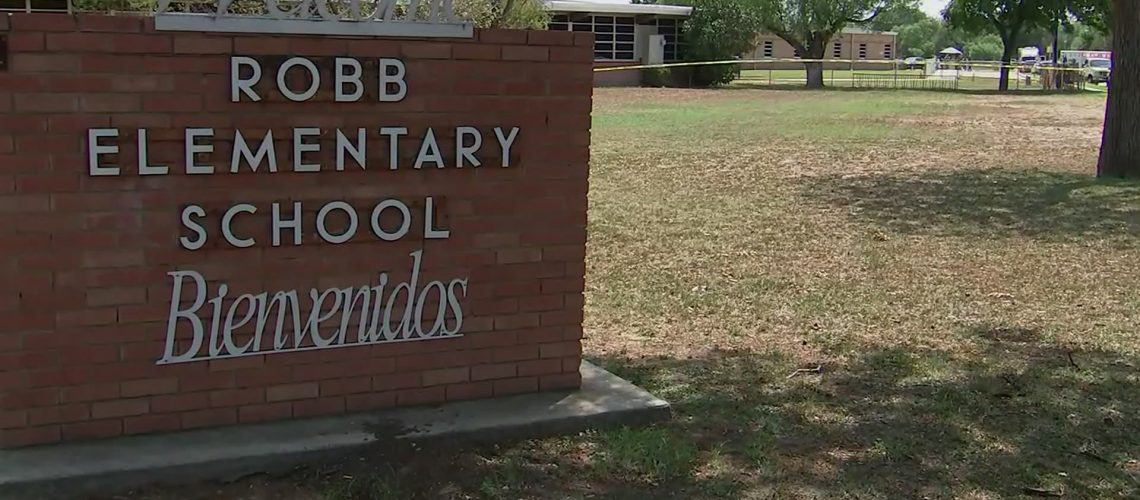As yet another tragic school shooting in the US claimed the lives of 19 children and two adults, compassionate people everywhere have been shaking their heads in sadness, horror and disbelief. While such a tragedy is deeply regrettable, it provides lessons we would do well not to ignore.
One of these lessons is for leaders.
As details have emerged, it has been distressing to learn that police officers arrived at the school at 11:35 and were positioned outside the classroom waiting for orders to breach the door. This despite the continued shooting inside the classroom and numerous 911 calls made by multiple children inside the classroom.
And this stand-off continued until 12:50, when the shooter was shot dead by a Border Patrol Tactical Unit officer who breached the door with a set of keys from the janitor.
In fact, scores of police from numerous law enforcement agencies were on the scene and outside the classroom for an hour and 15 minutes before an attempt was made to stop the carnage. How many precious lives might have been saved had they acted sooner?
This, of course, begs the question: Who is to blame for the horrendous delay in action being taken?
At the moment, fingers are being pointed at school police chief, Pedro Arredondo, who heads up a small unit set up just four years ago to provide security for Uvalde’s eight schools. As such, it was his call, and Arredondo had ordered the officers on the scene not to storm the two classrooms where, according to police, the shooter had already fired over 100 rounds at the walls, the door and the petrified children locked in the rooms with him.
Understandably angry parents – some of whom had been at the scene and had begged the police to act – are blaming the police officers themselves, questioning their courage and suggesting that they did not act because they were afraid of being injured or killed.
While such allegations are indeed understandable, they’re probably unfair, because police officers face injury and death on a daily basis as part of their commitment to serve and protect. Fear or a lack of courage were probably not the reasons for their refusal to act.
The sad fact is that it’s not a question of WHO is to blame but WHAT is to blame.
And the answer to that question lies in the leadership style, philosophy or practice applied – a command and control leadership.
Such a leadership style simply does not allow for any breaking of the rules or for a disobeying of orders. And, in fairness to those police officers on the outside of the door, they were probably itching to go in and stop the shooting but they were simply too well trained. They were too well disciplined in obeying, and never disobeying, orders. In a nutshell, THAT’S the problem with command and control leadership and that was what delayed their intervention and cost lives.
So, the lesson for leaders to take from this tragic event is that command and control leadership is no longer relevant for a complex world that requires split second decisions that must be made in the heat of the action. Such decisions cannot be made by someone far removed from what’s happening. They have to be made by people on the spot, who are best placed to make those decisions.
Essentially, command and control leadership is based on a lack of trust – a failure to trust the competence of people to make decisions themselves, to trust that others further down the chain might know better and can possibly make better decisions than those higher up in an organisation. And that mindset has no place in a fast moving volatile world and workplace.
So, Mr/Ms Leader … take a good look at your leadership mindset as that’s what determines your leadership style. If you have a need to control things, ask yourself, “Why?” Is it that you’re secretly insecure and don’t want others to make decisions because you feel they’ll show you up? Or is it that you don’t trust the judgement or competence of others? If so, why don’t you trust them?
If you’ve hired the right people and trained them to do what they need to do, you can confidently set them free to make the decisions they need to make. Then get out of their way and let them do what you hired them to do!
That’s what collaborative leadership is all about.
Alan Hosking is the Publisher of HR Future magazine, www.hrfuture.net and @HRFuturemag. He is an internationally recognised authority on leadership competencies for the future and teaches experienced and younger business leaders how to lead with empathy, compassion, integrity, purpose and agility. He has been an Age Management Coach for two decades. In 2018, he was named by US-based web site Disruptordaily.com as one of the “Top 25 Future of Work Influencers to Follow on Twitter“. In 2020, he was named one of the “Top 200 Global Power Thought Leaders to watch in 2021” by peopleHum in India. In 2022, he has been named on the Power List of the “Top 200 Biggest Voices in Leadership in 2022” by LeaderHum.





















